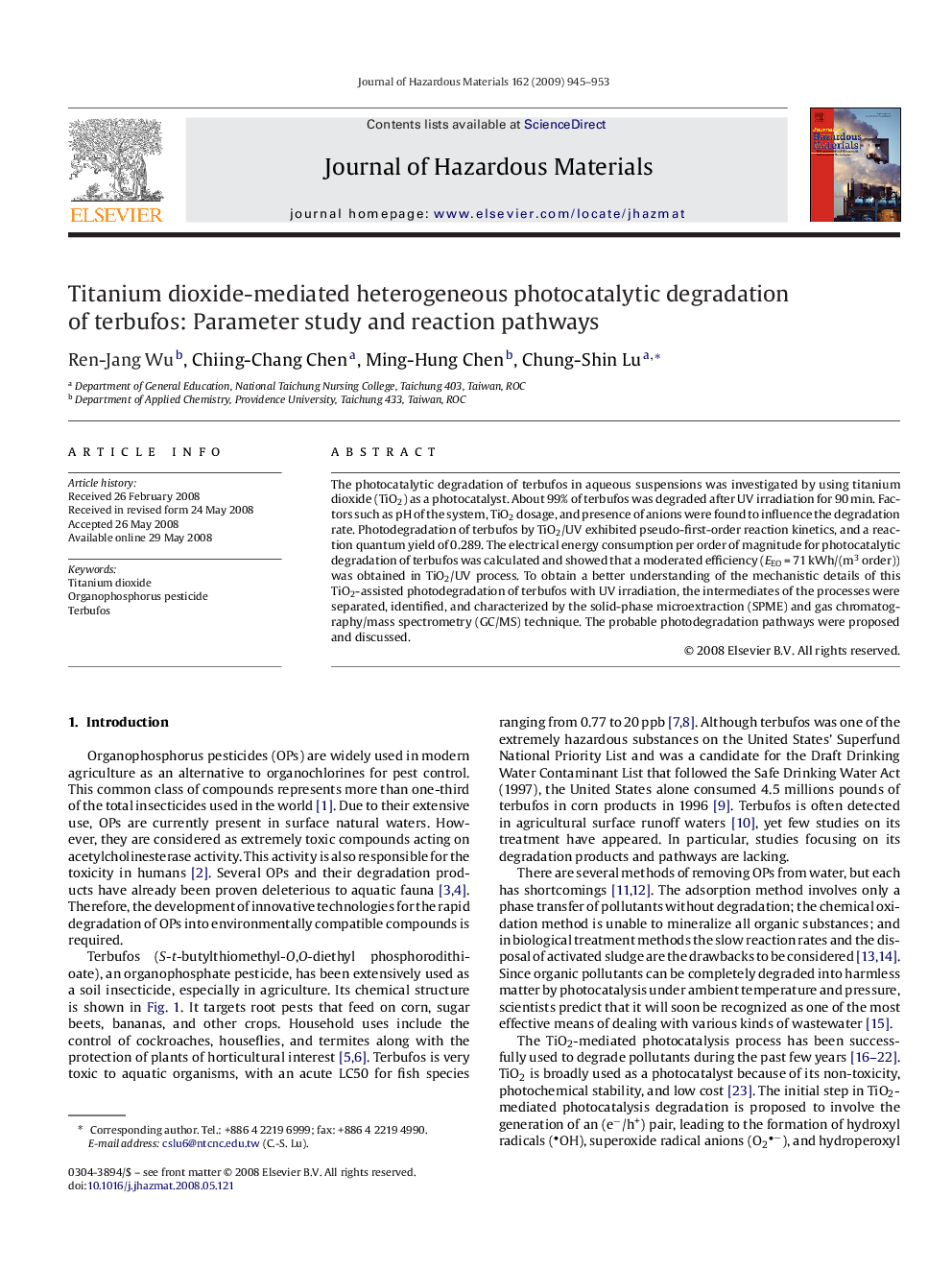| Article ID | Journal | Published Year | Pages | File Type |
|---|---|---|---|---|
| 582385 | Journal of Hazardous Materials | 2009 | 9 Pages |
Abstract
The photocatalytic degradation of terbufos in aqueous suspensions was investigated by using titanium dioxide (TiO2) as a photocatalyst. About 99% of terbufos was degraded after UV irradiation for 90Â min. Factors such as pH of the system, TiO2 dosage, and presence of anions were found to influence the degradation rate. Photodegradation of terbufos by TiO2/UV exhibited pseudo-first-order reaction kinetics, and a reaction quantum yield of 0.289. The electrical energy consumption per order of magnitude for photocatalytic degradation of terbufos was calculated and showed that a moderated efficiency (EEOÂ =Â 71Â kWh/(m3Â order)) was obtained in TiO2/UV process. To obtain a better understanding of the mechanistic details of this TiO2-assisted photodegradation of terbufos with UV irradiation, the intermediates of the processes were separated, identified, and characterized by the solid-phase microextraction (SPME) and gas chromatography/mass spectrometry (GC/MS) technique. The probable photodegradation pathways were proposed and discussed.
Related Topics
Physical Sciences and Engineering
Chemical Engineering
Chemical Health and Safety
Authors
Ren-Jang Wu, Chiing-Chang Chen, Ming-Hung Chen, Chung-Shin Lu,
